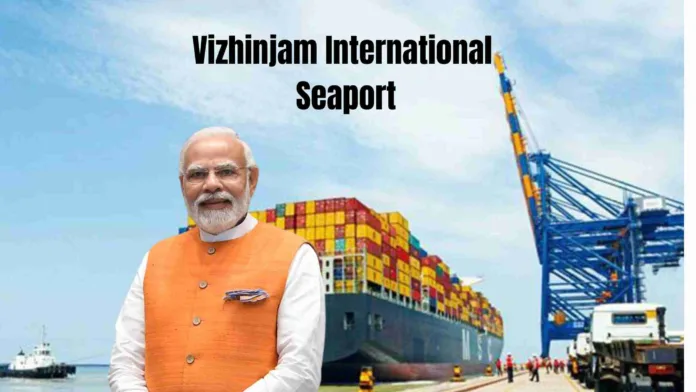Prime Minister Narendra Modi on Thursday inaugurated the Vizhinjam International Seaport, India’s first deep-water transshipment terminal, marking a major leap in the country’s maritime and trade infrastructure. Strategically located near the international east-west shipping route, the port is expected to transform Kerala into a global maritime hub and significantly boost India’s economy.
A Game-Changer in India’s Maritime Vision
Situated 14 kilometers from Kerala’s capital, Vizhinjam Port lies just 10 nautical miles from one of the world’s busiest international shipping lanes. With its natural depth of over 20 meters and ability to host Ultra Large Container Vessels (ULCVs), Vizhinjam is uniquely positioned to become South Asia’s leading transshipment hub.
Developed through a public-private partnership between the Government of Kerala and Adani Ports and Special Economic Zone Ltd (APSEZ), the first phase of the project has been completed at a cost of approximately ₹8,867 crore. The port has already received its first mothership and is gearing up for full-scale commercial operations.
Boosting Trade, Reducing Dependency
By handling large-scale transshipment operations domestically, India is expected to reduce its dependency on foreign ports such as Colombo (Sri Lanka), Singapore, and Jebel Ali (UAE), where much of India-bound cargo is currently rerouted. This will not only lower logistics costs and turnaround time but also allow India to retain revenue that previously went to overseas terminals.
“Vizhinjam is not just a port—it’s a pivotal part of our vision to make India a global supply chain leader,” said Prime Minister Modi at the inauguration ceremony. “It will strengthen our economy, create jobs, and reduce our reliance on foreign ports for critical shipping operations.”
Economic and Employment Opportunities
The port is expected to generate over 4,000 direct jobs and approximately 20,000 indirect jobs in its initial phase. These include employment in shipping, logistics, customs, port services, warehousing, and allied sectors—delivering a substantial boost to Kerala’s coastal economy.
Additionally, the port’s operations will feed into India’s broader National Logistics Policy, aiming to bring down the national logistics cost from 13-14% to single digits as a percentage of GDP.
Modern Customs Integration and Trade Facilitation
Vizhinjam Port is fully integrated with advanced customs and trade facilitation systems. The Central Board of Indirect Taxes and Customs (CBIC) has implemented digital customs clearance, real-time cargo tracking, and paperless documentation—all aimed at increasing transparency and reducing delays.
“Digitization and customs modernization are core to Vizhinjam’s efficiency,” a senior CBIC official stated. “It will serve as a model for India’s port-led development and seamless cross-border trade.”
The Road Ahead: Global Trade Hub
Upon completion of all phases, Vizhinjam Port will have a capacity to handle over 7 million TEUs (Twenty-Foot Equivalent Units), placing it among the largest container ports in Asia. It will also be connected to major industrial corridors, including the Chennai-Bengaluru Industrial Corridor and the proposed Southern Economic Zone.
With its inauguration, Vizhinjam Seaport is no longer a promise—it’s a strategic reality redefining India’s maritime narrative.

